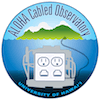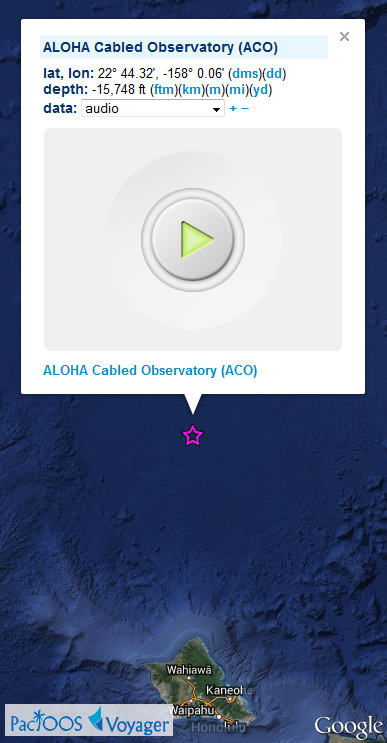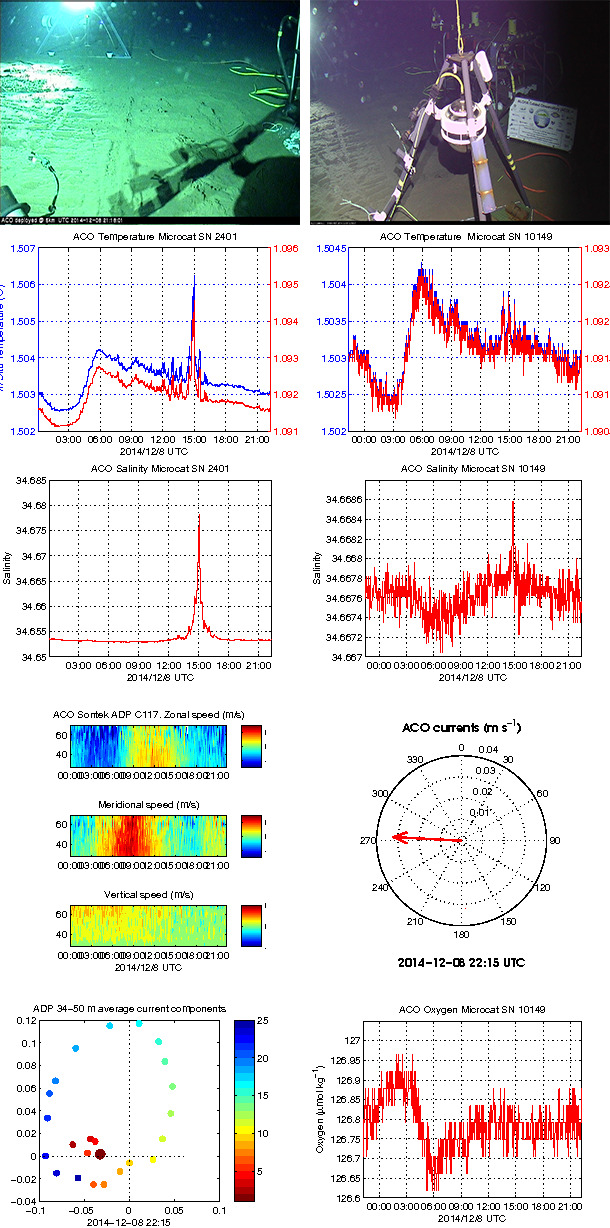ALOHA Cabled Observatory (ACO)
ALOHA Cabled Observatory (ACO)
Posted December 8, 2014
The University of Hawaiʻi’s ALOHA Cabled Observatory (ACO) is located 100 km (62 mi) north of the island of Oʻahu, Hawaiʻi in the North Pacific Ocean, approximately 1.2 km (0.75 mi) southwest of Station ALOHA (“A Long-term Oligotrophic Habitat Assessment”). Since June 2011 it has been providing real-time oceanographic observations from a depth of 4,800 m (2.9 mi) via a submarine fiber optic cable that comes ashore at Mākaha on Oʻahu.
Up to now the ACO overlay in Voyager (found under “observations” > “ocean observatories”) was very simplistic, displaying a marker at the ACO site with a pop-up window providing its coordinates and website. It now incorporates plots of the latest data (temperature, salinity, oxygen, and currents), photographs at the ocean bottom, and the ability to listen in real-time to a live audio stream of the ACO hydrophone (underwater microphone). Listening to the audio feed, one may hear sounds from a passing ship or the songs of humpback whales, which migrate to Hawaiʻi in winter. We also hope to add a live video feed in the near future.
Voyager screenshot of ACO overlay showing ability to stream real-time audio:

Screenshot of the types of photographs and data plots available for viewing through Voyager’s ACO overlay:

For further information, please visit:







